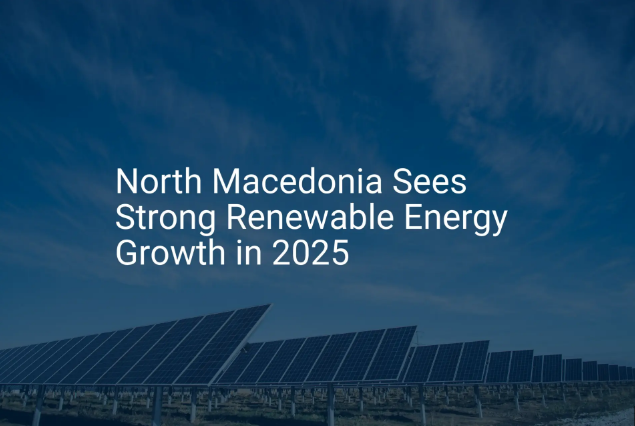In recent years, North Macedonia has entered a new phase of energy transition, steadily increasing electricity production from renewable sources. Solar panels and wind turbines are the two sectors showing the fastest growth, while public and private investments are giving the country new momentum in diversifying its energy sources, reports ISD.
In August of this year, electricity production from solar panels increased by 26 percent compared to August of the previous year, while energy produced from wind turbines grew at an even more impressive rate of 66 percent. Out of a total of 458,478 MWh of electricity produced in August, 37,373 MWh came from solar systems and 19,905 MWh from wind turbines. However, compared to July of the same year, both categories recorded lower production in August due to less favorable weather conditions.
Although renewable energy is growing significantly, the overall energy production structure in North Macedonia remains dominated by traditional sources. Around 40 percent of electricity in August was generated by coal-fired power plants, which continue to form the main backbone of the country’s energy system. Combined-cycle plants contributed 22 percent, while hydroelectric plants accounted for 20 percent, reflecting the continued reliance on existing fossil and hydro infrastructure.
For a clearer overview, the distribution of production by energy source is shown in the table below:

Another important development is the movement in cross-border electricity trade. The country increased electricity imports by 19.7 percent, while exports decreased by 30.9 percent. This change indicates that domestic demand has risen, surpassing domestic production at certain periods, especially when renewable energy sources fail to operate at full capacity.
While the figures show clear progress, they also highlight the challenges ahead. Despite double-digit growth in the solar and wind sectors, renewable sources accounted for only about 12.5 percent of total electricity production in August. To achieve green transition targets and reduce dependence on coal, North Macedonia needs to deepen investments in new capacities, modernize the transmission grid, and more strongly support distributed generation, particularly from households and small businesses.
In conclusion, ISD’s analysis shows that the country has made significant steps forward, but the path toward a sustainable and decarbonized energy system remains long. New policies, strategic investments, and private sector involvement will be decisive in accelerating this process.
Read more on: https://www.pvknowhow.com/news/north-macedonia-renewable-energy-impressive-growth-in-2025/

